Video of the Week:
Controlling Yellow Nutsedge in Your Lawn
Vegetables:
New Potatoes
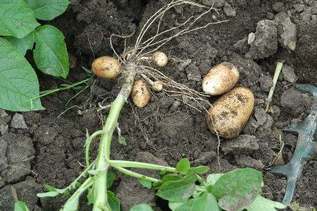
Do Not Over-Fertilize Tomatoes
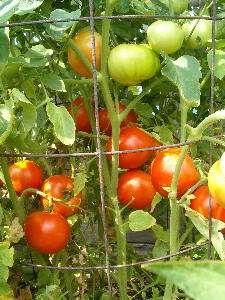
The first sidedressing should go down one to two weeks before the first tomato ripens. The second should be applied two weeks after the first tomato ripens and the third one month after the second. Common sources of nitrogen-only fertilizers include nitrate of soda, urea, and ammonium sulfate. Blood meal is an organic fertilizer that contains primarily, but not exclusively, nitrogen. Use only one of the listed fertilizers and apply at the rate given below.
Nitrate of soda (16-0-0): Apply 2/3 pound (1.5 cups) fertilizer per 30 feet of row.
Blood Meal (12-1.5-.6): Apply 14 ounces (1.75 cups) fertilizer per 30 feet of row.
Urea (46-0-0): Apply 4 ounces (½ cup) fertilizer per 30 feet of row.
Ammonium Sulfate (21-0-0): Apply 0.5 pounds (1 cup) fertilizer per 30 feet of row.
If you cannot find the above materials, you can use a lawn fertilizer that is about 30 percent nitrogen (nitrogen is the first number in the set of three) and apply it at the rate of 1/3 pound (3/4 cup) per 30 feet of row. Do not use a fertilizer that contains a weed killer or weed preventer. (Ward Upham)
Fruit:
Fruit Reminders
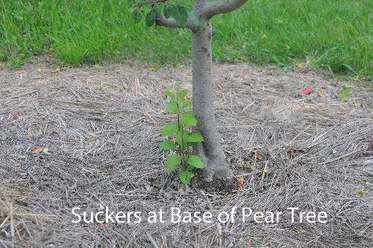
* Remove fruit from heavily loaded apples and peaches (if the flower buds weren’t killed by frost) to improve fruit size and prevent limbs from breaking. Apples should be spaced every 4 inches and peaches every 6 to 8. Note that is an average spacing. Two fruit can be closer together if the average is correct.
* Remove sucker growth from the base of fruit trees and grape vines.
* Remove water sprout growth from fruit trees. Water sprouts grow straight up.
* "Comb" new growth on grape vines so these new shoots hang down for greater exposure to sunlight.
* Continue disease and insect control to prevent fruit damage. (Ward Upham)
Trees:
How Healthy Is My Tree?
So how do you tell where the new growth stops? Look for a color change in the stem. New growth is often greener than that from the previous year. There is also often an area of what looks like compressed growth where growth transitions from one year to the next.
Lastly, look at leaf attachment. Leaves are only produced on current seasons’ growth. Therefore, new growth stops where leaves are no longer attached directly to the twig but to side branches. However, pay attention as leaves may be appear to be attached directly to last year’s growth but are actually borne on short spurs. If you look closely, you can tell the difference.
All this clue tells you is whether a tree is under stress or not. It does not tell you what is causing poor growth. This year, the most common cause by far is environmental stress caused by the sharp drop in temperature in November. However, the dry winter and excess moisture this spring has also contributed to stress.
Stress is cumulative. In other words, trees may not have completely recovered from stressful conditions (such as drought) that occurred within the last several years. The accumulating stress may have damaged root systems with further damage occurring due to saturated soils this spring. These trees may struggle as we enter summer. Though the roots were able to keep up with moisture demands during the cooler spring weather, they may not be able to as temperatures rise. Such trees may suddenly collapse and die or slough off branches they can no longer support. If
possible, water to a depth of 12 inches every couple of weeks we do not receive rain in order to avoid further stress. (Ward Upham)
Propagating Woody Plants from Softwood Cuttings
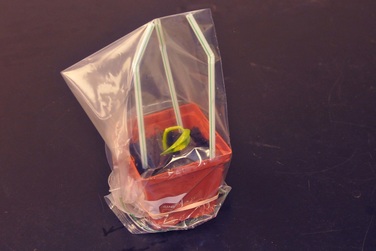
It is best if cuttings are taken after a rain or several hours after the plant has been well watered to ensure the cuttings remain turgid. Stems should be mature enough that they snap rather than bend when placed under pressure. Cuttings should be about 6 inches long with cuts made at an angle just below a node, the area where a leaf joins the stem. The angle provides a larger cut surface and more area for the cutting to callus and root.
Strip off the lower leaves and place the cutting in a moist rooting media after it has been dipped in rooting powder. Several rooting mediums are suitable including sand with peat moss, sand with vermiculite, perlite with peat moss, and perlite with vermiculite. A suitable medium should provide good moisture-holding capacity and be open enough to provide good aeration to the roots. Though some plants can be rooted directly in water, roots formed in water do not adapt well to soil.
Rooting containers vary. Some gardeners prefer flats because the number of cuttings each will hold. Others prefer small, individual pots for each cutting so cuttings can be removed from the propagation environment as they root. Regardless of the container used, relative humidity should be kept at a high level.
This can be done by enclosing the container or containers in a plastic bag. Use wooden dowels, plastic straws or a similar object to keep the plastic off the top of the cuttings. Place the rooting container in bright, indirect light and check often for watering needs. When roots are about 1 inch long, cuttings can be removed from the propagation chamber and potted. (Ward Upham)
Lawns:
Little Barley in Lawns
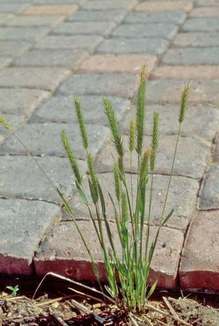
At this point there is no control for little barley other than a glyphosate product such as Roundup. However, Roundup will kill whatever it hits and cannot be used in a lawn situation. The only preemergence herbicide that I know is labeled for lawn situations is Surflan. Monterey Lawn and Garden also sell it under the name of Weed Impede. Surflan can only be used on warm-season grasses (bermudagrass, buffalograss, zoysiagrass) and tall fescue grown in warm-season areas. Because little barley is a winter annual, apply the preemergence herbicide in September. (Ward Upham)
Miscellaneous:
Flooding Damage
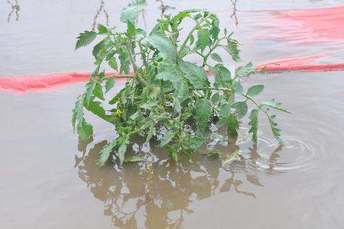
vegetables and flowers do not. The longer these plants are subjected to saturated soils, the more likely damage will occur.
Usually, as long as water drains away within 24 hours, the impact on plant health is minimal. However, shallow, stagnant water under hot, sunny conditions can literally cook plants, reducing survival time to as little as a few hours.
Vegetables: What about safety regarding eating produce from a garden that has been flooded? Standing water should not cause a safety problem as long as the aboveground portions of the plant remain healthy. Do not use produce from plants that have yellowed. Also, using produce flooded with water contaminated with sewage (lagoon) or animal manure can also be dangerous.
The safest approach is to discard all garden crops that have been in contact with such water. Certainly, leafy vegetables should always be discarded. However, you may eat fruit from such crops as tomatoes, peppers, eggplants, sweet corn, squash, cucumbers, and similar vegetables that develops after the waters have subsided as long as the fruit is not cracked or soft. Always wash vegetables thoroughly before eating.
Lawns: Under the cool conditions of early spring, turfgrasses can often survive several days of flooding. However, during hot, sunny conditions with shallow, stagnant water, lawns may be damaged quickly, sometimes in a few hours. This situation often occurs when shallow depressions in a lawn allow water to pool. Note such areas and fill in with additional soil once the waters have subsided.
Trees: Trees differ markedly in their ability to withstand flooding. Some trees have mechanisms in place to provide oxygen to the roots of plants with water saturated soils and others do not. However, most trees will maintain health if flood waters recede in 7 days or less. It also helps if water is flowing rather than stagnant as flowing water contains more oxygen. If the roots of sensitive trees are flooded for long periods of time, damage will occur including leaf f drop, iron chlorosis, leaf curl, branch dieback, and in some cases, tree death. Another danger of flooding is the deposition of sediment. An additional layer of silt 3 inches or more can also restrict oxygen to the roots. If possible, remove deep layers of sediment as soon as conditions permit. This is especially important for small or recently transplanted trees.
Try to avoid any additional stress to the trees this growing season. Ironically, one of the most important practices is to water trees if the weather turns dry. Flooding damages roots and therefore the root system is less efficient in making use of available soil water. Timely waterings are vital to a tree’s recovery. Also be diligent in removing any dead or dying branches which may serve as a point of entry for disease organisms or insect pests. The following information on tree survival came from the US forest Service.
Trees Tolerant of Flooding: Can survive one growing season under flooded conditions. Red maple, silver maple, pecan, hackberry, persimmon, white ash, green ash, sweetgum, sycamore, eastern cottonwood, pin oak and baldcypress.
Trees Moderately Tolerant of Flooding: Can survive 30 consecutive days under flooded conditions. River birch, downy hawthorn, honeylocust, swamp white oak, southern red oak, bur oak, willow oak and American elm.
Trees Sensitive to Flooding: Unable to survive more than a few days of flooding during the growing season. Redbud, flowering dogwood, black walnut, red mulberry, most pines, white oak, blackjack oak, red oak and black oak.
After the Flood: Soils often become compacted and crusted after a heavy rainfall. This also can restrict oxygen to the roots. Lightly scraping the soil to break this crust will help maintain a healthy root system and therefore, a healthy plant. Be careful not to cultivate too deeply as shallow roots may be damaged. If you think the excessively wet weather will continue, bedding up the rows before planting even just a couple of inches, will improve drainage and allow for better aeration. (Ward Upham)
Contributors: Ward Upham, Extension Associate
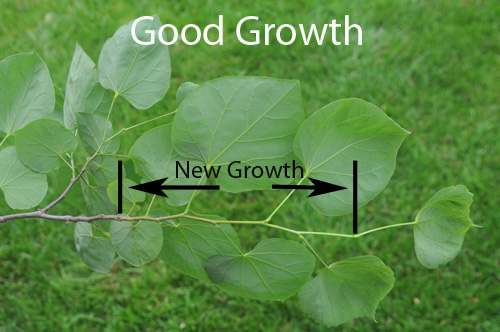
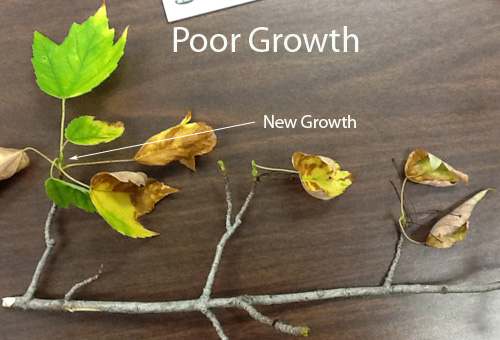
 RSS Feed
RSS Feed
